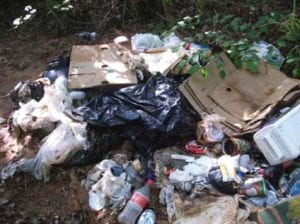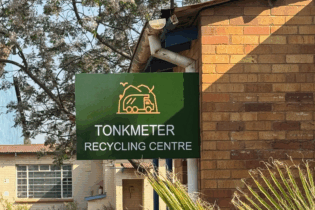With the majority of municipalities facing serious economic, social and environmental challenges related to solid waste management, innovative solutions for financing this management are needed to address this. RéSource takes a closer look.
In South Africa, issues and problems of waste management have been acknowledged and brought under the microscope through efforts such as the promulgation of the National Environmental Management: Waste Act, 2008 (Act No. 59 of 2008). The gradual increase of waste generation in the country, has contributed to the historical backlog of inadequate waste services,leading to unpleasant living conditions and an unhealthy environment. Increased emphasis is placed on operational waste management, environmental aspects and the legislative framework, but little effort is put into examining the funding mechanisms and policies affecting solid waste services. As such, the Financial and Fiscal Commission (FFC) drafted a document on the financing of waste management in South Africa. The FFC is an independent, objective and unbiased constitutional advisory institution, tasked with advising and making recommendations to the State on financial and fiscal matters. The document takes into account the current waste management patterns, and the unsustainable rate of waste generation and disposal – clearly outlining why municipalities can no longer afford the ‘collect and dump’ approach to solid waste management, particularly due to escalating collection and transportation costs. Funding models In 2011, the Department of Environmental Affairs (DEA) stressed concern over the cost of solid waste management and the lack of an established funding model, which has a direct impact on the amount of funding allocated to municipalities. Small towns and rural areas especially struggle to find funds to develop and rehabilitate their waste management infrastructure, mainly because of the lack of awareness and low prioritisation of waste management, the FFC’s research further stated. In addition, when funds are available to develop the infrastructure, the money is usually insufficient to operate and maintain the facilities. The one funding option, the Municipal Infrastructure Grant (MIG), in most cases does not cater for operational expenditure, and municipalities have to find innovative ways to fund and generate revenue in order to build, operate and maintain these facilities. Traditionally, municipalities generate revenue through user charges such as levies andrates, but in most cases these revenue sources are inadequate and are becoming unaffordable for poor communities – further adding to the increased need for tighter waste management alternatives and funding mechanisms. Waste management But before funding mechanisms can be properly addressed, it is important to take a step back and look at how the country is managing its solid waste. Kaminee Naidoo of the School of Geography, faculty of Science and Agriculture at the University of Natal, Pietermaritzburg Campus, put together a case study titled ‘An Analysis of Municipal Solid Waste Management in South Africa using the Msunduzi Municipality, which reviewed the municipal solid waste policies and strategies of local government authorities in South Africa; highlighting the shortcomings and discrepancies that exist between legislative policies and actual management practices. The study investigated the option of incineration versus landfilling; zooming in on recovery and reuse along the way. Her research concluded that landfills continue to dominate as the preferred method for solid waste disposal but space constraints at these sites is a serious cause for concern, which is even more reason as to why increased emphasis has been placed on the three ‘Rs’ of the waste hierarchy: reuse, recycle and recovery. However, we shouldn’t forget that land disposal is an essential part of every city solid waste management system. Regardless of the extent of recycling or resource recovery, there are always some wastes that must be disposed of in landfills, for example, non-compostable residuals. Most developing countries like South Africa employ open dumping as their form of land disposal. The study also confirmed a point many people are familiar with – illegal disposal methods such as street dumping and combustion are commonly practised in rural or lower-income regions, mainly due to the lack of knowledge around climate change. It is in these areas where the bulk of funding for long-term solid waste management should be allocated. Sustainable developmentInterwaste, for example, recognises an aversion to waste disposal by landfill and has resulted in not only a strong desire but an innate need for the diversion of waste from typical waste management practices, which has resulted in competitive, environmentallysound solutions.Disposal of waste by landfill is, however, a common practice in the country, becoming problematic as the population grows. The harsh reality is that landfills will be around for a while, especially in developing countries, and it is important to approach the design and lifecycle thereof with sustainable solutions. A good reference is the company’s completion of the design of a new general cell, Cell 3, at the Kupferberg landfill site in Namibia, early last year. As part of the contract, new contaminated stormwater channels along the toe of the new cell were designed, as well as clean stormwater cut-off channels running parallel with the contaminated stormwater channels. The layer works for the landfill comprised of:
- 300 mm thick sand protection/confining layer
- geosynthetic clay liner (GCL) supplied by Kaytech
- rip and re-compact 150 mm thick in-situ material.
- developing specific FCA guidelines for integrated municipal solid waste management
- taking greater advantage of the opportunities for job creation in the solid waste sector by incentivising ‘green’ jobs
- reviewing the funding conditions of the MIG to ensure local-level municipal waste management assets are eligible for financing
- the introduction of labour-intensive waste collection, reduction and recyclingmechanisms to areas where services are inadequate.
- Full cost accounting and efficient budgeting for waste services:this addressed the lack of sufficient funds for maintenance of waste management infrastructure, lack of models to deal with tariffs, costing and budgeting for waste services, poor administration of waste management matters, and tariffs that are not consistent with services provided.
- Promoting recycling and separation at source: this discussed waste collection systems from various municipalities that do not encourage separation at source and recycling, the availability of recycling and separation at source infrastructure, diminishing landfill air space and suitable land for disposal, and positives such as entrepreneurial opportunities for communities in the recycling sector.
- Accelerating public awareness on waste:this focused on the lack of coordination of messaging from national, provincial and local spheres of government; continuity in education and awareness programmes; and capacitating communities through education and awareness interventions.
- Best practice in management of waste disposal sites:this addressed limited technical capacity for the operation of waste disposal facilities, lack of sufficient funds, lack of suitable land and diminishing landfill air space, outdated and unmaintained equipment, and capacity building and private public partnerships.
- Mainstreaming youth jobs in waste management:this discussed attracting young people into waste management, sustainability of projects, harnessing the energy and enthusiasm of young people to address environmental concerns, and empowering communities through self-employment.
- Maximising the integrated waste management planning regime:this involved drafting measurable outcome based IWMPs,and looking at the capacity required to ensure effective IWMPs. Conclusions emerging from the conference found that the efficient management of waste is a major challenge for municipalities across the country. The complexity thereof calls for a comprehensive and multisectoral approach with a proactive dimension in order to reduce not only the amount of waste generated, but also to redirect the behaviour of communities toward a new level of positive participation in improving and maintaining a healthy, ecologicallyprotectedenvironment.








